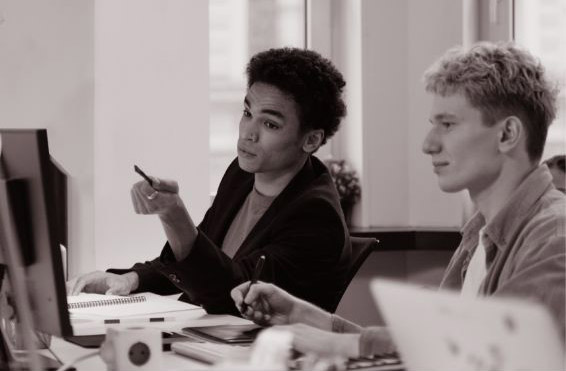| Acetone | Residual Solvent | Acute exposure can irritate the eyes, nose, and throat. Prolonged or repeated exposure may cause harm. |
| Acetonitrile | Residual Solvent | Inhalation or skin contact can cause irritation to the respiratory system, eyes, and skin. |
| Acrylamide | Processing Chemical | Suspected to be a potential carcinogen and may cause damage to the nervous system and reproductive organs. |
| Aldicarb | Residual Pesticide | Acute exposure can cause nausea, vomiting, headache, and in severe cases, respiratory failure. |
| Azoxystrobin | Residual Pesticide | Suspected of causing reproductive toxicity and adverse effects on aquatic organisms. |
| Benomyl | Residual Pesticide | Suspected of being a potential endocrine disruptor and may cause reproductive and developmental harm. |
| Bifenthrin | Residual Pesticide | Prolonged exposure may cause skin and eye irritation and affect the nervous system. |
| Bifenazate | Residual Pesticide | Suspected of causing reproductive toxicity and may have harmful effects on aquatic organisms. |
| Cadmium | Heavy Metal | Prolonged exposure can lead to kidney damage, respiratory problems, and an increased cancer risk. |
| Carbaryl | Residual Pesticide | Acute exposure can cause nausea, vomiting, and in severe cases, respiratory failure. |
| Chlorpyrifos | Residual Pesticide | Neurotoxic effects have been observed, especially in children. |
| Chlorthal-dimethyl | Residual Pesticide | Suspected of causing endocrine disruption and may have harmful effects on aquatic organisms. |
| Cyfluthrin | Residual Pesticide | May cause skin and eye irritation and affect the nervous system. |
| Cypermethrin | Residual Pesticide | Prolonged exposure may cause skin irritation, respiratory effects, and neurological symptoms. |
| Diazinon | Residual Pesticide | Associated with neurological effects, such as headaches, dizziness, and tremors. |
| Dichlorvos | Residual Pesticide | Acute exposure can cause respiratory distress, headache, and nausea. |
| Dieldrin | Residual Pesticide | Suspected of being a potential carcinogen and may cause neurological and reproductive effects. |
| Endosulfan | Residual Pesticide | Suspected of causing reproductive and developmental harm and may have harmful effects on aquatic organisms. |
| Ethoprophos | Residual Pesticide | Suspected of causing endocrine disruption and may have harmful effects on aquatic organisms. |
| Ethylbenzene | Residual Solvent | Prolonged exposure can affect the central nervous system, respiratory system, and kidneys. |
| Fenoxycarb | Residual Pesticide | Suspected of causing developmental and reproductive toxicity. |
| Fipronil | Residual Pesticide | Suspected of being a potential carcinogen and may have neurotoxic effects. |
| Fungicides (Various) | Processing Chemical | Health effects depend on the specific fungicide used. They can range from skin and eye irritation to respiratory and neurological effects. |
| Heptachlor | Residual Pesticide | Suspected of being a potential carcinogen and may cause damage to the nervous system. |
| Hexachlorobenzene | Residual Pesticide | Suspected of being a potential carcinogen and may cause damage to the liver, kidneys, and nervous system. |
| Imazalil | Residual Pesticide | Suspected of causing endocrine disruption and may have harmful effects on aquatic organisms. |
| Indole-3-butyric acid | Processing Chemical | Low acute toxicity, but long-term effects are still being studied. |
| Iprodione | Residual Pesticide | May cause skin and eye irritation and have harmful effects on aquatic organisms. |
| Lead | Heavy Metal | Even low levels of lead exposure can lead to neurological damage, especially in children. |
| Malathion | Residual Pesticide | Acute exposure may lead to respiratory distress, nausea, and vomiting. |
| Mercuric chloride | Heavy Metal | Can cause severe kidney damage, gastrointestinal effects, and neurological symptoms. |
| Metalaxyl | Residual Pesticide | Suspected of causing developmental and reproductive toxicity. |
| Methamidophos | Residual Pesticide | Acute exposure can cause nausea, vomiting, headache, and in severe cases, respiratory failure. |
| Methidathion | Residual Pesticide | Suspected of being a potential carcinogen and may cause harm to the nervous system. |
| Methomyl | Residual Pesticide | Acute exposure can cause nausea, vomiting, abdominal pain, and in severe cases, respiratory failure. |
| Methoxyfenozide | Residual Pesticide | Low acute toxicity, but potential for chronic toxicity is still being studied. |
| Mevinphos | Residual Pesticide | Acute exposure can cause nausea, vomiting, headache, and in severe cases, respiratory failure. |
| Myclobutanil | Residual Pesticide | Inhalation or skin contact may cause irritation to the respiratory system, eyes, and skin. |
| Naphthalene | Processing Chemical | Can cause hemolytic anemia, liver damage, and neurological effects. |
| Neonicotinoids (Various) | Residual Pesticide | May have neurotoxic effects and cause harm to bees and other pollinators. |
| Nicotine | Residual Pesticide | High concentrations can be toxic and may cause nausea, vomiting, seizures, and in severe cases, respiratory failure. |
| Ochratoxin A | Mycotoxin | Suspected of causing kidney damage and associated with immune system disorders. |
| Parathion | Residual Pesticide | Highly toxic and can cause severe effects on the nervous system, respiratory system, and cardiovascular system. |
| Permethrin | Residual Pesticide | May cause skin and eye irritation and affect the nervous system. |
| Phenol | Processing Chemical | Can cause irritation to the skin, eyes, and respiratory system. |
| Phorate | Residual Pesticide | Highly toxic and can cause severe effects on the nervous system, respiratory system, and cardiovascular system. |
| Piperonyl butoxide | Processing Chemical | Low acute toxicity, but can enhance the toxicity of other pesticides. |
| Pyrethrins | Residual Pesticide | Skin contact may cause irritation, and inhalation can lead to respiratory distress. |
| Quinoline | Residual Solvent | Long-term exposure can cause damage to the eyes, lungs, liver, and kidneys. |
| Spinosad | Residual Pesticide | Low acute toxicity, but potential for chronic toxicity is still being studied. |
| Spiroxamine | Residual Pesticide | Suspected of causing reproductive toxicity and harm to aquatic organisms. |
| Streptomycin | Microbial Impurities | High concentrations may cause allergic reactions and hearing loss. |
| Tebuconazole | Residual Pesticide | May cause skin and eye irritation and have harmful effects on aquatic organisms. |
| Tetrachlorvinphos | Residual Pesticide | Suspected of being a potential carcinogen and may cause damage to the nervous system. |
| Thiabendazole | Residual Pesticide | May cause skin and eye irritation and have harmful effects on aquatic organisms. |
| Thiacloprid | Residual Pesticide | Suspected of causing harm to aquatic organisms and potential neurotoxic effects. |
| Thiamethoxam | Residual Pesticide | May have neurotoxic effects and cause harm to bees and other pollinators. |
| Thimerosal | Processing Chemical | Can cause allergic reactions and have toxic effects on the nervous system. |
| Tin | Heavy Metal | Can cause damage to the respiratory system, kidneys, and nervous system. |
| Tolylfluanid | Residual Pesticide | May cause skin and eye irritation and have harmful effects on aquatic organisms. |
| Trifloxystrobin | Residual Pesticide | May cause skin and eye irritation and have harmful effects on aquatic organisms. |
| Vinyl chloride | Residual Solvent | Chronic exposure has been linked to an increased risk of cancer, particularly liver cancer. |
| Xylene | Residual Solvent | Inhalation can cause headaches, dizziness, and irritation of the respiratory system. |
| Zeaxanthin | Residual Solvent | High concentrations may cause eye irritation and allergic reactions. |
| Zearalenone | Mycotoxin | Known to have estrogenic effects and may impact reproductive health and development. |
| Chlormequat | Agricultural Plant Growth Regulator | Suspected of being a potential carcinogen and may have reproductive effects. |
| Daminozide | Agricultural Plant Growth Regulator | Associated with potential carcinogenic and developmental effects. |
| Ethephon | Agricultural Plant Growth Regulator | Can cause irritation to the eyes, skin, and respiratory system. |
| Glyphosate | Agricultural Plant Growth Regulator | Suspected of being a potential carcinogen and may have endocrine-disrupting effects. |
| Maleic hydrazide | Agricultural Plant Growth Regulator | May cause irritation to the eyes, skin, and respiratory system. |
| Mepiquat | Agricultural Plant Growth Regulator | Prolonged exposure may lead to skin and eye irritation. |
| Paclobutrazol | Agricultural Plant Growth Regulator | Suspected of being a potential endocrine disruptor and may cause developmental effects. |
| Trinexapac-ethyl | Agricultural Plant Growth Regulator | May cause skin and eye irritation. |
| Atrazine | Agricultural Herbicide | Suspected of being an endocrine disruptor and may cause reproductive issues. |
| Chlorpyrifos | Agricultural Insecticide | Neurotoxic effects have been observed, especially in children. |
| Paraquat | Agricultural Herbicide | Highly toxic and can cause severe lung damage if ingested or inhaled. |
| Methomyl | Agricultural Insecticide | Acute exposure can cause nausea, vomiting, abdominal pain, and respiratory failure. |
| Malathion | Agricultural Insecticide | Acute exposure may lead to respiratory distress, nausea, and vomiting. |
| Captan | Agricultural Fungicide | May cause skin and eye irritation, and long-term exposure is a potential carcinogen. |
| 2,4-D | Agricultural Herbicide | May cause skin and eye irritation, and there are concerns about potential carcinogenicity. |
| DDT | Agricultural Insecticide | Banned in many countries due to its persistence and potential health risks, including cancer. |
| Diazinon | Agricultural Insecticide | Associated with neurological effects, such as headaches, dizziness, and tremors. |
| Lindane | Agricultural Insecticide | Suspected of being a potential carcinogen and may cause neurological effects. |
| Mancozeb | Agricultural Fungicide | May cause skin and eye irritation and potential developmental and reproductive effects. |
| Methoxychlor | Agricultural Insecticide | Suspected of being an endocrine disruptor and may cause reproductive and developmental harm. |
| Pyrethroids (Various) | Agricultural Insecticide | May cause skin and eye irritation and have neurotoxic effects. |
| Triadimefon | Agricultural Fungicide | Suspected of being an endocrine disruptor and may have reproductive effects. |
| Triazine herbicides | Agricultural Herbicides | Some triazine herbicides (e.g., simazine, propazine) have been associated with potential health risks, including developmental and reproductive effects. |
| Methyl bromide | Agricultural Fumigant | Can cause respiratory irritation and is classified as an ozone-depleting substance. |
| Chlorothalonil | Agricultural Fungicide | May cause skin and eye irritation, and long-term exposure is a potential carcinogen. |
| Glyphosate | Agricultural Herbicide | Suspected of being a potential carcinogen and may have endocrine-disrupting effects. |
| Imidacloprid | Agricultural Insecticide | Suspected of causing neurotoxicity and adverse effects on the endocrine system. |
| Methiocarb | Agricultural Insecticide | Can cause skin and eye irritation, and prolonged exposure may affect the nervous system. |
| Metolachlor | Agricultural Herbicide | Suspected of being a potential carcinogen and may cause developmental effects. |
| Naled | Agricultural Insecticide | Highly toxic and can cause respiratory distress, nausea, and vomiting. |
| Permethrin | Agricultural Insecticide | May cause skin and eye irritation and affect the nervous system. |
| Propargite | Agricultural Acaricide | Suspected of being a potential carcinogen and may cause skin and eye irritation. |
| Quinclorac | Agricultural Herbicide | May cause skin and eye irritation, and there are concerns about potential carcinogenicity. |
| Tebuthiuron | Agricultural Herbicide | Suspected of causing harm to aquatic organisms and potential reproductive effects. |
| Chlorfluazuron | Agricultural Insecticide | Suspected of causing reproductive and developmental toxicity. |
| Dicamba | Agricultural Herbicide | May cause skin and eye irritation and has potential endocrine-disrupting effects. |
| Ethoprophos | Agricultural Nematicide | Suspected of causing endocrine disruption and may have harmful effects on aquatic organisms. |
| Fenamiphos | Agricultural Nematicide | Can cause skin and eye irritation and have harmful effects on aquatic organisms. |
| Fenitrothion | Agricultural Insecticide | Acute exposure can cause nausea, vomiting, and headache. |
| Flumioxazin | Agricultural Herbicide | May cause skin and eye irritation, and long-term effects are still being studied. |
| Linuron | Agricultural Herbicide | Suspected of being a potential carcinogen and may have reproductive effects. |
| Metalaxyl | Agricultural Fungicide | Suspected of causing developmental and reproductive toxicity. |
| Metam Sodium | Agricultural Soil Fumigant | Can cause severe respiratory distress and skin irritation. |
| Methomyl | Agricultural Insecticide | Acute exposure can cause nausea, vomiting, abdominal pain, and respiratory failure. |
| Oxamyl | Agricultural Insecticide | Acute exposure can cause nausea, vomiting, and in severe cases, respiratory failure. |
| Phorate | Agricultural Insecticide | Highly toxic and can cause severe effects on the nervous system and respiratory system. |
| Pyrimethanil | Agricultural Fungicide | May cause skin and eye irritation, and long-term effects are still being studied. |
| Triclopyr | Agricultural Herbicide | May cause skin and eye irritation and affect the respiratory system. |
| Triphenyltin compounds | Agricultural Fungicide | Suspected of being endocrine disruptors and may cause reproductive effects. |








